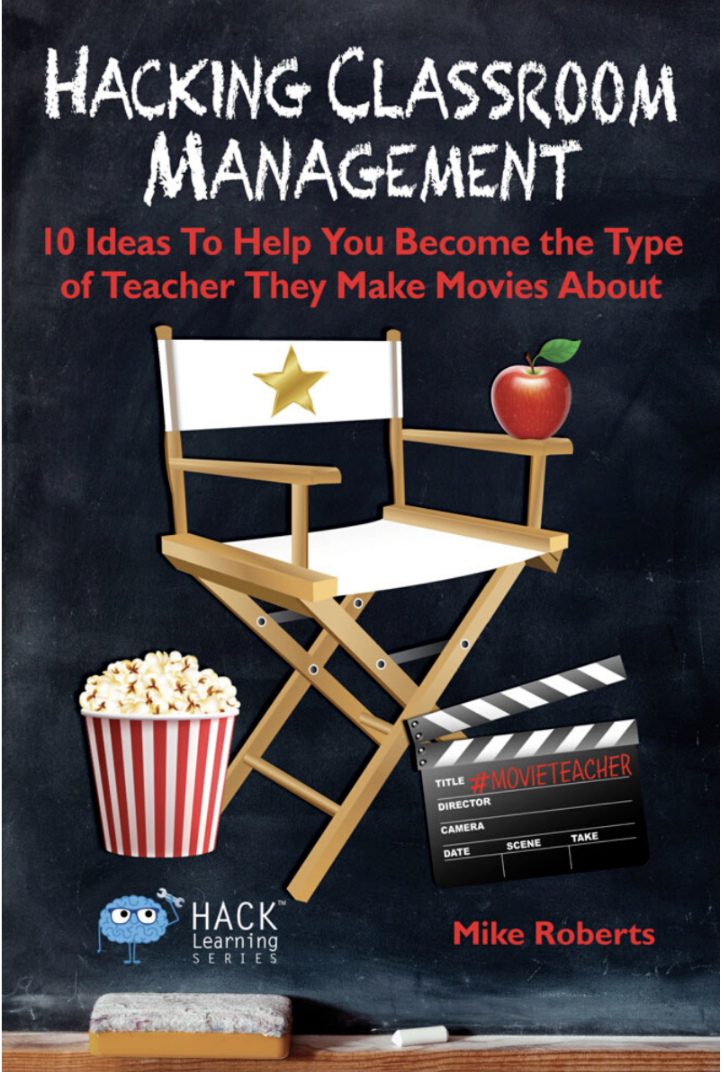Setting and Modeling High Expectations
Jun 01, 2021
In his popular book, Hacking Classroom Management, Utah English Teacher of the Year and sought-after speaker Mike Roberts brings you 10 quick and easy classroom management hacks that will make your classroom the place to be for all your students.
He shows you how to create an amazing learning environment that actually makes discipline, rules and consequences obsolete, no matter if you’re a new teacher or a 30-year veteran teacher.
He highlights the main areas where he sees problems with school discipline. One of them being: teachers let students' past determine the present.
Too often, when we see a student’s IEP, the list of accommodations, and the below-average test scores, we instantly lower our expectations. In fact, sometimes there isn’t even a file that causes us to do this.
It can be as simple as a student being related to one of your former students. And when this happens, rather than challenging these students to reach new heights, we often allow them to settle for a level of success that is far below their potential.
After all, there’s no way a student could change from one year to the next, right?
This hack asks you to turn the tables on the status quo by challenging you to establish, and model, high expectations for your students.
And rather than simply letting your students’ past determine their present, the ideas presented here allow your students’ potential to create their future.
EXPECT THEIR BEST (IN AND OUT OF THE CLASSROOM)
If you’re like many teachers, the day-to-day problems of school often impact the attitude that we bring to the classroom. As a result, all the little issues that arise over the course of a school year-end up shattering our best of intentions.
This approach is somewhat backward if you ask me. Rather than letting the school’s problems impact your attitude, you should instead let your attitude shape the actions of school.
While it is obviously best to set clear expectations at the beginning of each school year, there are valuable steps that can be implemented at any point. Each of the following strategies is a simple and effective method that can be immediately added to help you establish high expectations:
START EACH CLASS WITH A SMILE.
As easy as this sounds, this simple act will set the tone for the rest of your class. If your students see that you’re in a good mood, they will feed off the vibe you’re sending out.
A positive mood generally relates to fewer discipline infractions, and this results in more smiles. And so the cycle begins.
TELL YOUR STUDENTS YOU EXPECT THEIR BEST ON A DAILY BASIS.
Over the course of my career, there have been times when my students have struggled on an assignment, not because it was too difficult, but because my directions were not clear and understandable.
The same holds true with regard to behavior. When addressing expectations, explicitly teach and model the behaviors you want to see in your students. Don’t assume they know what you mean—show them!
DRESS UP.
I have a mantra that says, “Look good. Feel good. Do good.” I don’t know the science behind it, but I do know that when I dress up, my expectations (for myself and my students) are higher than normal.
Plus, teachers often talk about wanting to be treated as professionals, and for this to happen, we need to dress accordingly.
I also use this philosophy with my students. I tell them that, as a general rule, they will get dressed up for all the big occasions in their lives (graduations, weddings, award ceremonies, funerals).
I also let them know that unit tests and presentations in my class are big occasions, and they should dress up on those days. And yes, before you ask, I do notice an improvement in their behavior on those days!
ASK YOUR STUDENTS TO MAKE YOU PROUD.
I’m a big believer that all students truly want to succeed. I also believe that, despite what the news might say, students still have a great deal of respect for their teachers.
That’s why I blend these two concepts together on a regular basis by asking my students to make me proud through their behavior and effort.
By simply letting students know that you expect their absolute best, it will offset many of the classroom management issues (tardiness, disrespectful behavior, disengagement).
THANK YOUR CLASS AT THE END OF THE PERIOD.
Like the smile at the beginning, ending class with a “thank you” shows your class that you appreciate their time and that you value the thoughts they shared. Even better, give them high-fives, fist bumps, or personalized handshakes on their way out the door.
Again, it’s important to model the behavior you want to see, and the more you thank them, the more they will reciprocate.
To be the type of teacher they make movies about, you’ll want to model and maintain high expectations for your students and for yourself.








